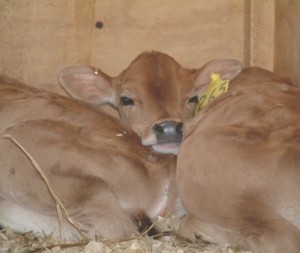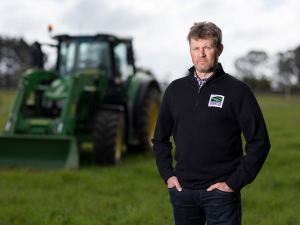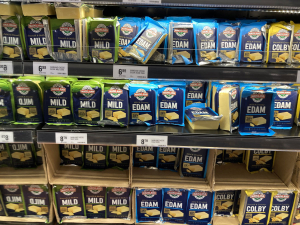Heifer calves given a branded additive in their milk grew 10% faster, with less meal, and two years later produced more milk in their first lactation than replacements reared on a standard milk and meal regime.
Those findings, by Dr Jean Margerison and colleagues, will be published in the world’s highest-rated dairy publication, US Journal of Dairy Science, later this year following a feeding trial with three mobs of 19 calves in 2008, and subsequent evaluation of their milking performance in 2010/11.
All mobs were fed 4-litres/day of whole milk, with ad-lib meal and straw, and given the probiotic X-Factor to 18 days. From then on there was a control mob on milk and meal, a mob given Queen of Calves with its milk, and a third mob given just the carbohydrate component of Queen of Calves in its milk.
The Queen of Calves mix increased growth rate and cut time to reaching the weaning weight of 90kg by eight days. This saved 9% in milk fed, and produced calves with significantly greater rib girth at 12 weeks. Daily hip width growth was 0.78 mm/day compared to 0.63 mm/day and they ate 16 % less pellet feed.
Two years later, in their first lactation, they produced 28 kg MS/head more than the control mob, a 12 % increase.
Margerison told Dairy News the carbohydrate-only mob’s growth and weaning was “in between” the control and the Queen of Calves mobs, but when it came to the first lactation, the Queen of Calves milk production advantage over carbohydrate-only wasn’t sufficient to be statistically significant.
The carbohydrate which makes up three-quarters of Queen of Calves (see table) was used on its own in the third mob in the trial. “The selection of these plant carbohydrates is very important. They have to have a low amylose to amylo-pectin ratio as only the selection and combination of the correct ones works!”
The carbohydrate, as a non-fat energy source, improves the energy-to-protein ratio of the milk, helping the calf grow faster without the fat deposition associated with offering calves more whole milk. “The important thing is it’s lean growth,” stresses Margerison.
The problem with feeding higher rates of milk to increase growth is two-fold, she adds.
Firstly, it makes for slower rumen development leading to a greater weaning check and slower growth rate post-weaning; secondly, it increases fat deposition in the udder of the calf which cuts production when the heifer comes into milk.
The extra amino acids in Queen of Calves – methionine, lysine and threonine among them – promote lean growth, while the pre-biotic and probiotic components help gut health and allow the calf to extract more energy from the milk itself.
Queen of Calves manufacturer Bell-Booth says the peer-review process and imminent publication of the research in the prestigious journal is “the ultimate confirmation” of the calf nutrition programme’s value.
“This will send a strong message to vets who will appreciate the science behind the process, and to farm consultants looking to maximise the on-farm production and profitability for their clients,” says chief executive Stephen Bell-Booth.
The programme, including X-factor, typically costs $80/calf, while the 28 kgMS extra milk in the first lactation alone is worth $170/heifer, without taking into account the savings in calf feeding, or other advantages of better grown heifers entering the herd.
Margerison says the target should be heifers coming into the herd at 85-90% of their mature weight. “You only need to look at the LIC data to see most animals aren’t getting anywhere near that. It’s a major management issue.”
Small heifers struggle to compete for feed in the herd, are more likely to go lame, produce less milk as they still have to grow more, and often don’t get back in calf. The problems are exacerbated on feed pads, she notes.
“If you can guarantee a well grown calf at the rearing phase you’re off to a good start because it’s in that first year that most heifers fall behind [growth-rate targets].”









